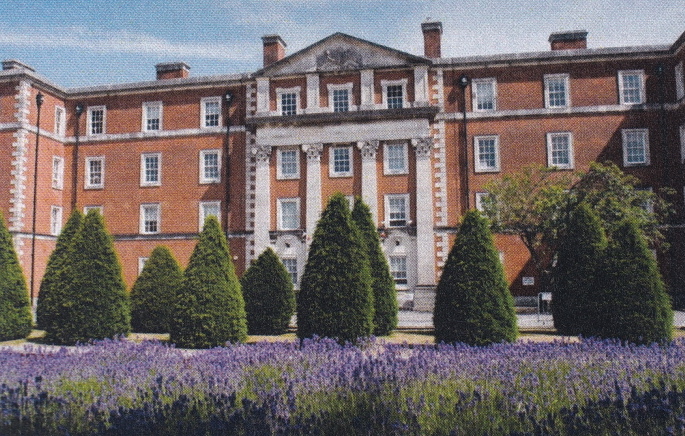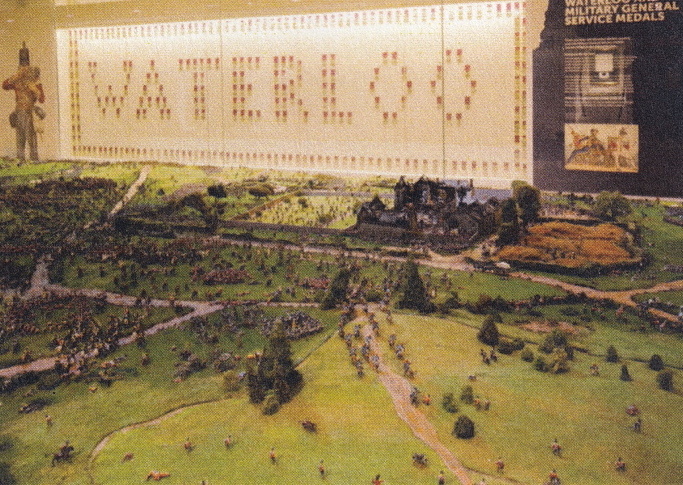TrustNews Sep 21
Winchester's museums
In a new occasional series, we highlight the best of Winchester's museums. First up are the six museums that make up Winchester's Military Quarter. Christine Pullen, curator of The Royal Greenjackets (Rifles) Museum, tells us more.
Winchester's Military Quarter is a group of six outstanding military museums situated within a couple of minutes walking distance from The Great Hall. They occupy a part of the historic site where Winchester's Castle, the King's palace and military barracks once stood.
The museums are one of Winchester's hidden treasures. Each museum has something different and special to excite and inspire visitors of all ages.

Short Block, home of the Gurkha and HorsePower museums (Photo: Winchester Military Museums)
HorsePower is the regimental museum of The King's Royal Hussars. Visitors can learn how the horse cavalry of the past has developed into the modern armoured regiment of today, The King's Royal Hussars. The history covers the Peninsular War, the Charge of the Light Brigade and the two World Wars. Displays include colourful uniforms and World War 1 trench warfare and the actual cupboard where a soldier was hidden from the enemy for over three years.
The Royal Hampshire Regimental Museum is situated apart from the other military museums in the imposing surroundings of Serle's House.
This museum tells the story from 1702 onwards of the 37th (North Hampshire) and 67th (South Hampshire) Regiments before they merged in 1881 to become The Hampshire Regiment, and in 1946 The Royal Hampshire Regiment, the county regiment of Hampshire.
The Regiment's Memorial Garden, laid out in 1954, fronts the museum, and is a peaceful place in which to sit and reflect.
The Royal Green Jackets (Rifles) Museum records the origins, history and exploits of The Oxfordshire and Buckinghamshire Light Infantry, The King's Royal Rifle Corps and The Rifle Brigade before they merged to become The Royal Green Jackets in 1966. In 2007 The Royal Green Jackets became a part of today's Regiment, The Rifles.
This museum provides a popular focus on the introduction of the rifle into the British army and the formation of the 95th Rifles on which Bernard Cornwall's books and the TV series Sharpe's Rifles were based. There is also a magnificent diorama of the battlefield of Waterloo, featuring over 30,000 model soldiers and horses. Among the 12,000 objects on display are 31 Victoria Crosses.
The Rifles Museum records the living heritage of the British Army's newest and largest infantry regiment, The Rifles. Formed in 2007 from the merger of The Devonshire and Dorset Regiment, The Light Infantry, The Royal Gloucestershire, Berkshire and Wiltshire Regiment and The Royal Green Jackets, the exhibition focusses on the current activities and the ethos of The Rifles and their experience of soldering in the 21st century, particularly in Kosovo, Iraq and Afghanistan.
The Gukha Museum can be found in the same building as HorsePower. This museum takes you on a journey of discovery recording 200 years of loyal and distinguished service of Gurkha soldiers to the British Crown, beginning in 1814 and enduring to this day. Nepal, the country from which Gurkhas continue to be recruited for the British army, remains Britain's oldest ally in Asia.
At this museum you can learn about numerous battles and campaigns in which Gurkhas have courageously fought, and view a display commemorating the twenty-six awarded Victoria Crosses. You can also learn about the culture, religion and social structure of these brave warriors, armed with their kukris, the national weapon of Nepal, and still used in combat today.

The Waterloo Diorama at The Royal Green Jackets (Rifles) Museum (Photo: The RGJ (Rifles) Museum)
The Museum of the Adjutant General's Corps is situated in the former guardroom of the barracks. The corps was formed in 1992 from an amalgamation of units including the Army Legal Corps, The Royal Military Police, The Women's Royal Army Corps and the staff clerks of The Royal Army Ordnance Corps and The Royal Electrical and Mechanical Engineers. The principal purpose of the corps today is to provide administrative support to the army.
This museum tells the fascinating stories over many centuries of the various corps that now form The Adjutant-General's Corps. The displays include an example of a prisoner's cell laid out with the detainee's kit exactly as it used to be, and a War Department driving permit once issued to HM The Queen.
Opening times for the museums can be found at www.winchestersmilitaryquarter.org
Christine Pullen
